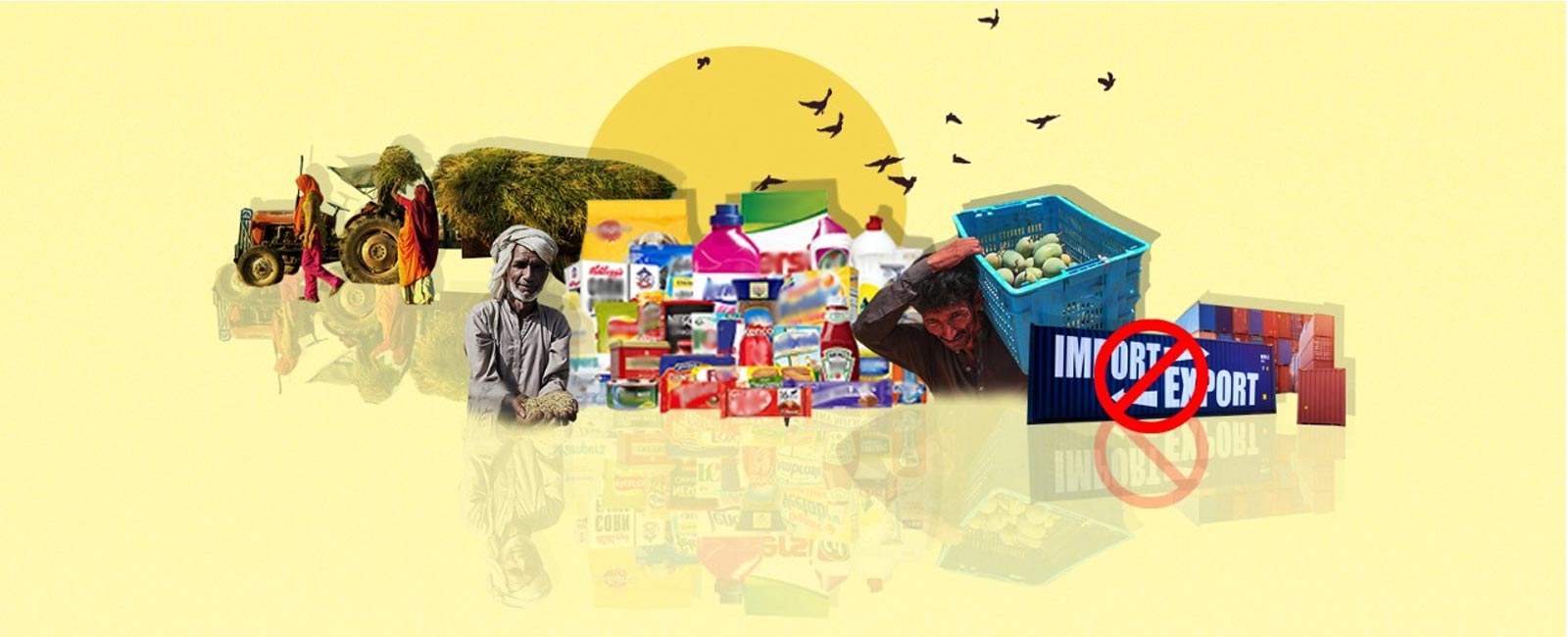FMCG remains most resilient in 2022; agriculture languishes as biggest loser
Devastating floods washed out most crops; however, a frenzied hoarding spree after the catastrophe shot up one-time demand for FMCG products

In a span of just a few months, the political uncertainty-led turmoil has brought the economy to its knees as all sectors from the most sound to the unstable have been ravaged by the crisis. And it seems that the destruction is far from over.
The political tug-of-war over general elections and the administrative measures taken by the coalition government stoked fears of further economic instability, potentially devastatingly impacting businesses.
With most businesses bearing the brunt of this situation, the fast-moving consumer goods (FMCG) industry has managed to fare better than the rest. The catastrophic flooding impacted as many as 33 million people and the political regime change crippled many businesses, aggravating their financial burden.
However, the FMCG sector, an essential industry, has persisted in moving ahead against the headwinds and may have been the least affected sector.
Pakistan Business Council CEO Ehsan Malik confirmed to Geo.tv that despite challenging conditions, including high inflation, the FMCG industry continued to “grow its top line”, albeit mostly led by price increases.
“In some cases, margins declined, but for the most part, net profit increased,” Malik said, adding that major brands were able to cushion the rising cost by reducing the grammage of the packs.
The FMCG industry belongs to a defensive sector as it caters to the daily needs of people; therefore, it is able to withstand pressures arising from lower disposable incomes.
Moreover, while Pakistan continued to struggle with the infrastructural needs of the rising population, the FMCG industry takes benefited from it.
Malik says the rising population and growing urbanisation help transform demand from open to packed formats.
The FMCG companies also took other such measures to ensure there was no financial burden on the supply chain.
Meanwhile, consumer behaviour also changed as although demand for certain brands rose two to three times than usual, it was a one-off surge. Panic buying by consumers was driven by the fear that products will run out of stock due to the import ban imposed by the government in May.
In May, the coalition government — just one month after coming into power — through an SRO598 of 2022 slapped a ban on the import of nearly 800 items in 33 categories in a bid to contain the rising import bill to minimise pressure on the country’s dwindling foreign exchange reserves.
However, the government, after realising the folly and the haste with which the step had been announced, lifted the ban on most of the items subsequently except three — completely built-up (CBU) vehicles, cellphones, and electronics.
Since people accumulated stocks of goods for two to three months due to the ban, next month they would not have the same demand. There wasn’t a permanent increase in demand — as the ban was also withdrawn later.
He added that even with the panic behaviour, the scale was vastly different from the trend seen in other economies as most people in Pakistan did not have a lot of disposable income.
A one-time surge in demand for certain products was seen, while for others there was a permanent change in the habit in some cases.
According to the industry official, since COVID-19 people have started washing their hands more; they are becoming more aware of keeping themselves germs-free. “Hence, for the goods range that caters to those needs, we are predicting that a certain percentage increase in demand will be permanent,” Malik said.
Overall, the sector remained in the limelight as it emerged as the most resilient during the prevailing economic uncertainty.
Agriculture paints a sorry picture
Meanwhile, the agriculture sector — the backbone of Pakistan’s rural economy — has been hard hit by the calamitous floods in the outgoing year.
Bad governance coupled with sky-high inflation added to the miseries of the farmers which rang alarm bells. Consequently, it became difficult to predict the state of the agriculture sector and feed the people of Pakistan for the next year.
During the fiscal year, 2021-22- the agriculture sector registered a 4.4% growth compared to 3.4% in the corresponding year. Except for the wheat crop, all other crops have shown impressive growth.
However, in the current fiscal year, floods hit most of the country, thereby damaging the Kharif crops.
The World Bank, in its report titled Post-Disaster Needs Assessment, estimated that the floods have damaged agriculture and its sub-sectors to the tune of Rs800 billion or $3.7 billion. Around 4,410 million acres of agricultural land have been damaged and 0.8 million livestock are estimated to have perished.
Crops contributed to 82% of the total damage and losses in the sector, followed by livestock with 17% and fisheries/aquaculture accounting for the remaining 1%. Sindh and Balochistan are the most affected provinces, contributing 72% and 21% respectively to the total value of damage and losses registered in the sector, followed by Khyber Pakhtunkhwa, Punjab, and special regions.
The destruction of the crops, livestock and aquaculture infrastructure and assets has resulted in the temporary deterioration of livelihoods, employment and agriculture-related income, as well as the potential decline in the export of important crops such as cotton and sugarcane.
Overall damages are estimated to be around Rs1,986 billion, which translates into a loss of around $9.24 billion. The World Bank suggested that the country needs at least Rs854 billion, or $3.98 billion for the recovery of this sector. This year, the poor performance of the agriculture sector has hit the farmers as well as the common citizens of Pakistan.
For the outlook, the Finance Division, in its monthly outlook report, said standing water due to recent floods might create problems in achieving the assigned wheat sowing target, however, the federal and provincial governments are working hard and committed to enhancing wheat productivity.
“In addition to the timely increase in Minimum Support Price (MSP), the government has taken measures/initiatives like awareness campaigns, extension services, subsidised and quality provision of inputs (seed and fertilisers) etc, are focused to enhance wheat productivity,” the report mentioned.
It, however, stated that the input situation is expected to remain favourable due to incentives announced in Kissan Package 2022 that will boost agriculture productivity. The better input situation is expected to increase crop production in the Rabi season.
Thumbnail and banner illustration. — Geo.tv/Ayesha Nabi




